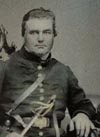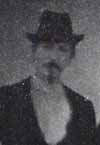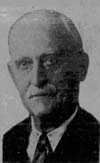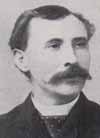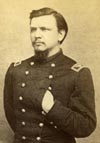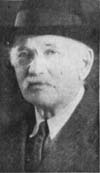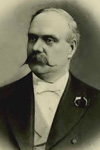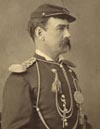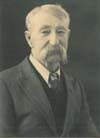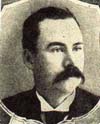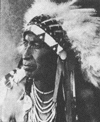James Montgomery Bell (left) was born on October 1, 1837, in Williamsburg, Blair County, Pennsylvania. He was the First Lieutenant for Company D who was not present at the battle because he was on leave. He was promoted to Captain effective June 25, 1876, due to the death of Captain George Yates.
Joseph Milton died in Tillsonburg, Ontario, Canada, on October 1, 1904. He was a Private in Company F who was not present at the battle due to detached service, serving as the cook for the regimental band.
Wilbur Fiske Blair died on October 2, 1891, in Lewisburg, Pennsylvania, and was buried there in the Lewisburg Cemetery. He was a Private in Company A who participated in the valley and hilltop fights during the battle.
Patrick Carey died in Washington, D.C., on October 3, 1893, and was buried the following day in the Soldiers’ Home National Cemetery there. He was a Sergeant in Company M who participated in the valley and hilltop fights.
Frank Braun died on October 4, 1876, at Fort Abraham Lincoln, Dakota Territory, during an operation on the gunshot wounds he received during the battle. He was a Private in Company M who participated in the valley fight and was wounded in the face and left thigh during the fight on Reno Hill. He was originally buried at the Fort Abraham Lincoln Cemetery but was later reinterred in the Custer National Cemetery on Crow Agency, Montana.
Abram B. Brant (left) died at Camp J. D. Sturgis, Dakota Territory, on October 4, 1878, from a gunshot wound to the abdomen and was buried at Fort Meade National Cemetery. He was a Private in Company D who participated in the hilltop fight. He was awarded the Medal of Honor the day after his death for his efforts during the battle. See also 7th Cavalry Troopers in South Dakota.
Henry Melanchton Krusee, who was also known as Melanchton H. Crussy, was born on October 5, 1840, in New York City. He was a Private in Company G who was not present at the battle due to detached service at Powder River, Montana. See also 7th Cavalry Troopers in South Dakota.
On October 5, 1878, eight men were awarded the Medal of Honor for their actions on Reno Hill. Known as the water carriers, they were:
- Neil Bancroft
- Abram Brant (posthumously)
- Benjamin C. Criswell
- Charles Cunningham
- David W. Harris
- William M. Harris
- Stanislas Roy
- Thomas W. Stivers
Black Fox (left) died on October 5, 1936, and was buried in the Holy Family U. S. Scouts Cemetery in Sanish, Mountrail County, North Dakota. He was an Arikara Scout who was not present during the battle because he was scouting.
Jacob Horner (right) was born in New York City on October 6, 1855. He was a Private in Company K who was not present during the battle due to detached service at Powder River, Montana.
James Dougherty died on October 6, 1884, in Nicholson, Pennsylvania, and was buried in St. Patrick’s Cemetery there. He was a Corporal in Company B who was with the pack train and in the hilltop fight.
John Lattman died of a bleeding ulcer on October 7, 1913, in Rapid City, South Dakota, and was buried in the Elk Vale Cemetery, east of Piedmont, South Dakota. He was a Private with Company G who participated in the valley and hilltop fights during the battle. See also 7th Cavalry Troopers in South Dakota.
Henry Petring (left) died in Brooklyn, New York, on October 7, 1917, and was buried in the Cypress Hills National Cemetery there. He was a Private in Company G who participated in the valley and hilltop fights, during which he was wounded in the eye and hip.
James Boggs died on October 7, 1921, in Harrisburg, Dauphin County, Pennsylvania, and was buried in the Shoops Cemetery there. He was a Private in Company H who received a medical discharge prior to the campaign.
